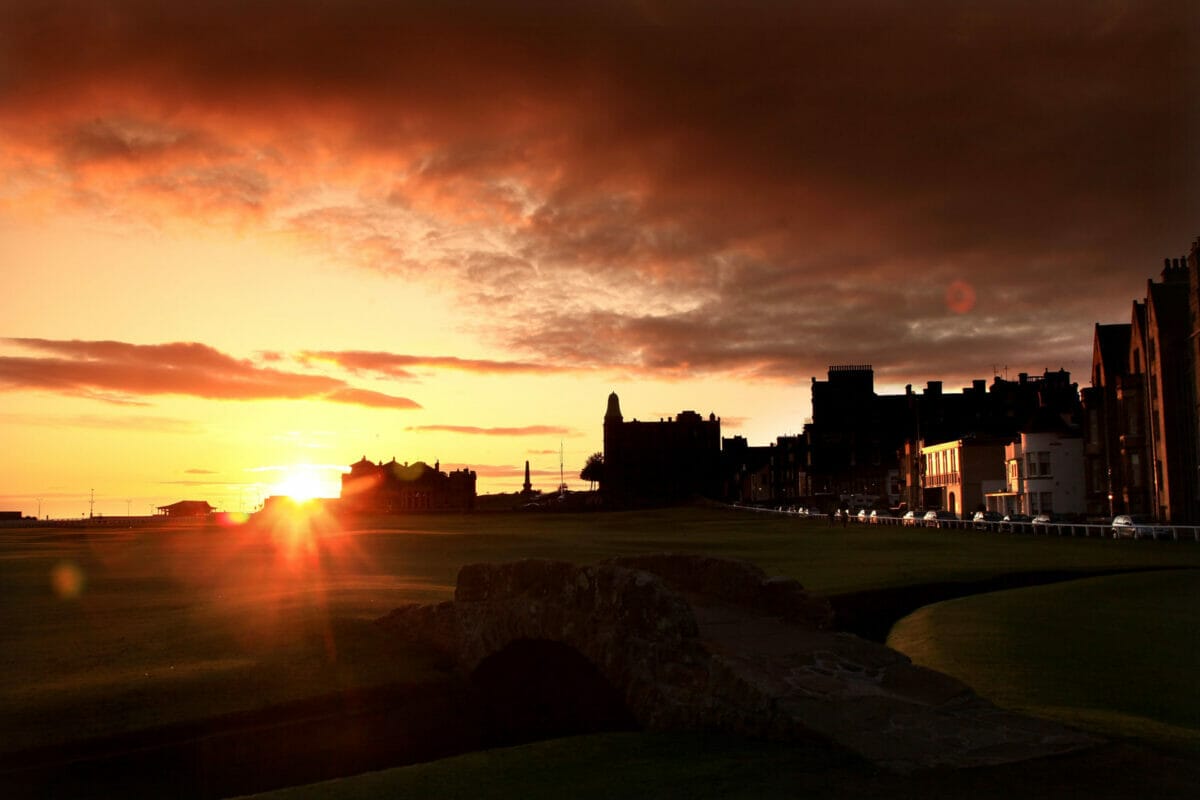Golf is so old its actual birth is shrouded in mystery. No one is absolutely certain when exactly or where exactly it began. One might question if golf was ever born at all? As some scientists contend in regard to the origins of man himself, the game may have simply evolved – Bernard Darwin.
Three well-established norms of golf as we know it today are: a round consists of 18-holes; the dimension of the hole is 4.25″ inches exactly in diameter and players are not allowed to partake in competitions with more than 14-clubs. How these age-old conventions became imbedded within the rules was convoluted and somewhat arbitrary, to say the least. I intend giving my readers some anecdotal and historical background to each of these taken for granted conventions over the next number of weeks. They are all interesting stories so it will be as much for my own education and enjoyment as anyone else’s.
How golf became an 18-holes game is as random and unplanned as the origins of the game itself. In the earliest years, golf courses could be any number of holes from five to twenty-two. The Old Course at St Andrews is considered to be the “home of golf” because (as far as is known) the game was first played (on a casual basis) over common ground known as ‘the Links at St Andrews’ in the early 15th century. ‘Rough’ Golf grew increasingly popular in Scotland until James 11 of Scotland (1430-1460) banned it in 1457 because he believed that young men were playing too much golf instead of practicing their archery. The ban was upheld by James III, and remained in force until 1502, when James IV, a golfer himself, removed it.
In 1552, Archbishop John Hamilton gave the townspeople of St. Andrews the right to play on the links. In 1754, 22 noblemen, professors, and landowners founded the Society of St Andrews Golfers. This society would eventually become the precursor to the Royal and Ancient Golf Club which is (in partnership with the USGA) the de facto governing body for golf worldwide until this day. By coincidence, the first course formally laid out at St. Andrews consisted of 22-holes (11-out; 11-in featuring 11-double greens) and was not reduced to 18 until 1764.
The exact date of its establishment is hazy but 1619 is usually quoted as the year the playing of golf was first formalised at the extremely important (from an organisational and administrative point of view) Leith Links in the docklands area of Edinburgh, Scotland. Leith featured a circular 5-hole routing with all five holes measuring between 400 and 450-yards; making it a formidable test for players confined to using the most basic of wooden balls and clubs. There was no par in those days. Competitions (for bets) were always played by match play; man V. man. A game/match normally consisted of 10-holes (2 rounds). (A subject for another article in due course?)
Both Charles I (1600-1649) and the future James 11 (1633-1701) were said to have played golf at Leith while in residence at Holyrood Palace nearby. By the time an ever-expanding city caused golf at Leith to cease in 1888, forcing the enthusiasts to seek pastures new, 18-holes had only recently been recognised as the ‘accepted’ number of holes on a championship standard golf course. How that precise and somewhat eccentric number came about was arbitrary. Incidentally, the first set of written rules of golf were also developed at Leith Links in 1744 by The Company of Gentlemen Golfers. This exclusive group moved around quite a lot before morphing into The Honourable Company of Edinburgh Golfers that eventually settled at Muirfield (built by Old Tom Morris in 1891) Strangely, these ‘official rules of golf’ remained unpublished until 1899 (late in the day, don’t you think considering the game was over 400-years old by then?)
Musselburgh Links, also in Edinburgh was established as a 7-holes facility in 1764. One new hole was added in 1828 and another in 1870 to make it 9. Musselburgh has had a chequered history; hosting The Open Championship on six occasions between 1874 and 1889 as well as countless challenge matches for ‘big stakes’ between the Morris’s from St. Andrews and the Park’s from Musselburgh. Still in existence in spite of the best efforts of the East Lothian County Council to shut it down for health and safety reasons, a shortage of land ensures the course has remained steadfastly 9-holes. At the beginning of golf in the USA, the same situation obtained. Several early US Opens were played on 9-holes courses.
Prestwick was laid out by Old Tom Morris in 1850 as a 12-hole course. When the first-ever, Open competition confined to professionals, with the objective of identifying the so-called ‘Champion Golfer of the Year’, was held at Prestwick in 1860 and won by Willie Park from Musselburgh, the format was three rounds in one day (36-holes). The first twelve championships were all played at Prestwick, which did not expand to 18-holes until 1884 and it hosted 24 championships in total; the last one in 1925. The championship remained a 36-holes/one day event until 1892. The first winning score by Willie Park was 174-strokes (two 87s, you could say). No wonder players were not overly fond of counting strokes in those early days!























Leave a comment